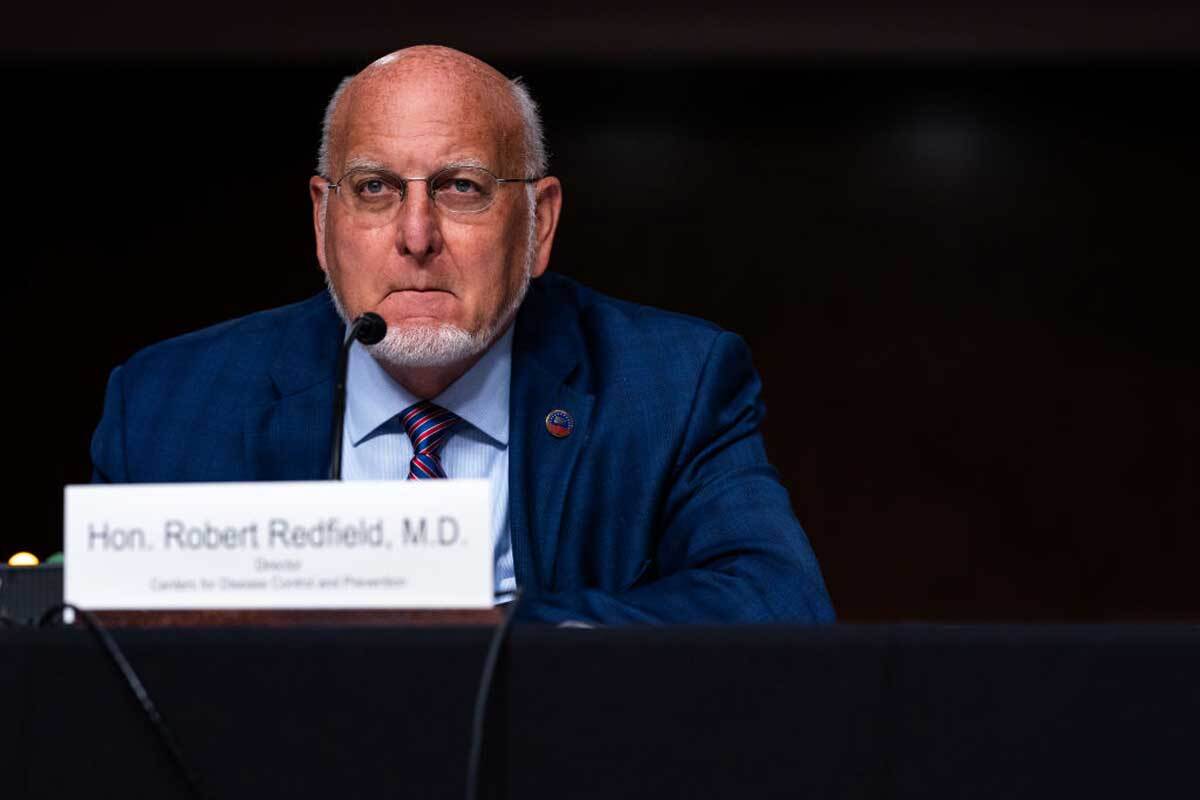Three health officials testified on Sept. 16 before the Senate Appropriations Subcommittee on Labor, Health and Human Services, Education, and Related Agencies (Labor-HHS-Ed) to review the administration’s coronavirus response efforts.
In his opening statement, Chairman Roy Blunt (R-Mo.) highlighted the role of the subcommittee in supporting research and public health, adding that more investments are needed for testing as well as vaccine trials, manufacturing, and distribution.
“Neither this administration or the last one, frankly, prioritized research like this committee has, and we know that in our committee, we've worked hard in the last six years and in the last five budgets in a bipartisan manner to increase the funding in the annual appropriations bills for the [National Institutes of Health (NIH)] by nearly 40%, for [the Centers for Disease Control and Prevention (CDC)] by 21% and for preparedness by 44%,” Blunt said.

Ranking Member Patty Murray (D-Wash.) focused on the need for an additional comprehensive COVID-19 relief package to support communities across the country. As in previous hearings, Murray addressed the need for a comprehensive vaccine distribution plan from the CDC. She added that the CDC’s COVID-19 Vaccination Program Interim Playbook for Jurisdiction Operations, released just before the Sept. 16 hearing, is missing “important details” on research and Food and Drug Administration (FDA) review guidance, addressing disparities in clinical trials, and supply chain disruptions.
On the vaccine distribution timeline, CDC Director Robert Redfield, MD, testified that a vaccine may be available in November or December, but with limited supply and with priority for certain populations such as first responders and populations with underlying health conditions.
“In order to have enough [Americans] immunized that we have immunity, I think it’s going to take six to nine months” from initial vaccine distribution, Redfield said. Additional details on vaccine distribution will be available following the CDC’s Advisory Committee on Immunization Practices meeting on Sept. 22.
Assistant Secretary for Health at the Department of Health and Human Services (HHS) Adm. Brett Giroir, MD, updated the subcommittee on the nation’s testing capacity, citing over 100 million viral tests that have been completed, and the expectation that approximately three million tests per day will be available. During questioning, he said that the average turnaround time for test results from major referral labs now averages just under 1.5 days.
Giroir also highlighted the distribution of 150 million rapid point-of-care tests developed through the Rapid Acceleration of Diagnostics (RADx) initiative, which has been championed by Blunt and Sen. Lamar Alexander (R-Tenn.). He added that the test can deliver results in 15 minutes for the cost of $5.
Giroir also encouraged universities to ramp up use of their existing equipment for COVID-19 testing through a recently initiated partnership, which was advertised in a Sept. 10 HHS request for information.
Several members questioned Redfield on the CDC’s Aug. 24 revisions to testing guidelines for asymptomatic individuals [see Washington Highlights, Sept. 11]. Redfield reiterated that the changes were misinterpreted and that the CDC was “never recommending not to test asymptomatic” individuals, but rather that the CDC intended to emphasize testing for individuals with “significant exposure” and vulnerable populations. Redfield added that the CDC is working on additional clarifying documents, subsequently published by CDC on Sept. 18.
Assistant Secretary for Preparedness and Response at the HHS Bob Kadlec, MD, thanked the subcommittee for its efforts to provide emergency supplemental funding that “have been essential in permitting significant advancements under [Operation] Warp Speed,” the initiative to develop medical countermeasures against COVID-19. Kadlec added that three SARS-CoV-2 vaccines are in Phase 3 clinical trials, sufficient supply of the therapeutic remdesivir for 650,000 patients has been distributed to states, and more than 500 million face coverings have been delivered to vulnerable populations and essential workers.
Blunt reminded witnesses that the subcommittee expects agencies to spend appropriated funds on the programs and initiatives that Congress directs funds to through legislation, specifically citing the Provider Relief Fund. When Blunt asked if $20 billion for the production of 300 million COVID-19 vaccine doses and $6 billion for vaccine distribution would be appropriate in future emergency supplemental bills, Kadlec and Redfield said yes.
Alexander raised the issue of preparing for the next pandemic, asking Kadlec about specific actions to take now and the related costs. Kadlec pointed to increased domestic manufacturing for biologics and vaccines, as well as increased capacity to manage stockpiles. Kadlec added that the government likely needs to “require hospitals and other health care institutions to have some baseline level of preparedness and stockpile,” with an associated cost of approximately $2 billion to manage the national stockpiles.
Sen. James Lankford (R-Okla.) raised concern that some manufacturers are utilizing human fetal tissue in their development of a COVID-19 vaccine, adding that there should be an “ethical alternative.” He added, however, “There's obviously six different [vaccine] candidates going through the vaccine process right now because no one knows if any one of them is going to be successful.” Officials agreed that multiple vaccine candidates are under investigation but did not know the details regarding cells used in the development of each vaccine.
Sen. Shelley Moore Capito (R-W.Va.) also shared her concern regarding increased opioid overdoses and overdose deaths during the pandemic. Redfield added that an increase of almost 18% in suspected overdose admissions to hospitals has been recorded during the pandemic.
Several members questioned Redfield on the CDC’s involvement in a new $250 million media campaign to ensure that the CDC’s subject matter experts can communicate truthfully and directly with the American public without political interference. Redfield testified that the CDC has not yet been involved other than through the transfer of funds from CDC to the HHS Office of the Assistant Secretary for Public Affairs.
Redfield and Giroir will return to the Senate on Sept. 23 to testify on the COVID-19 response before the Health, Education, Labor, and Pensions Committee along with National Institute of Allergy and Infectious Diseases Director Anthony Fauci, MD, and FDA Commissioner Stephen Hahn, MD.